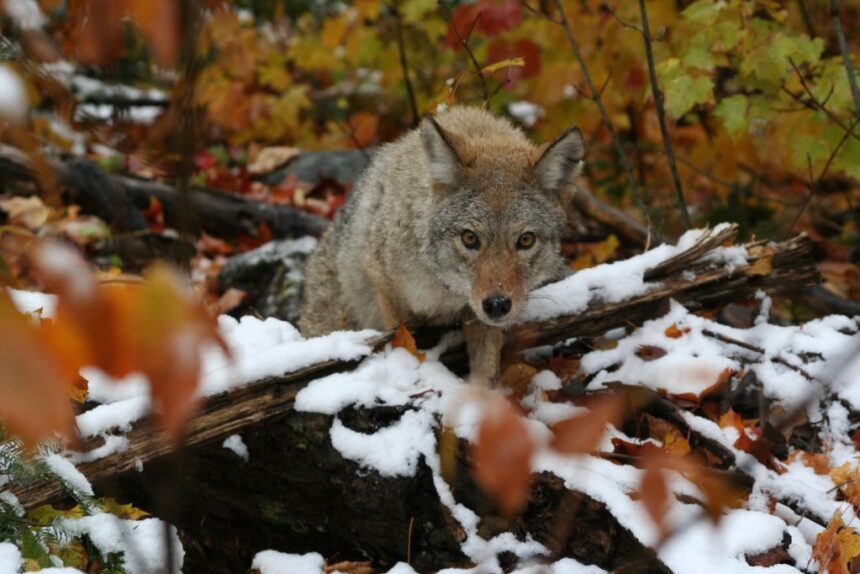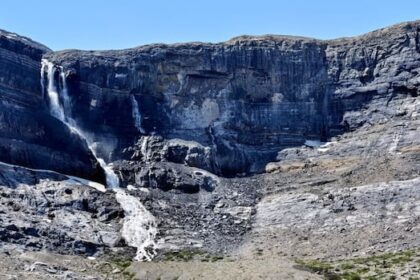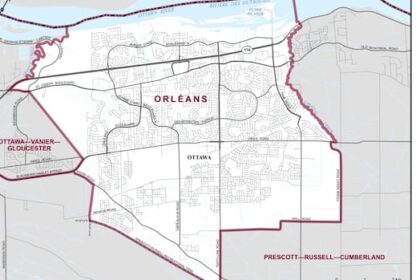A chihuahua killed in front of its owner. A child approached by a bold predator — even as his parent tried to scare it away. Wild dogs trotting down Toronto sidewalks in the middle of the day, unfazed by nearby humans. In recent years, the lore of the urban coywolf has filled southern Ontario media reports everywhere from Hamilton to St. Catharines to Kingston. The idea of a more muscular, predacious coyote wandering the streets is understandably transfixing — and terrifying. But whether what we’re seeing are more than just coyotes — the same ones that have long ventured out for urban walks — has become a complicated, misinformation-laden debate for cities, citizens and scientists. And it’s one that ignores the very real ecological crisis of coyotes and wolves interbreeding. The coywolf is ostensibly the offspring of a wolf and a coyote. That much is straightforward; what’s harder to pin down is where — or if — they even exist. Mississauga’s animal service receives reports of coywolf sightings, but the city says these are just eastern coyotes. The City of Burlington notes eastern coyotes share “remnants of DNA” with wolves, which “does not affect their behaviour in terms of how humans can safely coexist.” The City of Toronto rules out the existence of the coywolf, saying it’s just a nickname and coyotes are “the same coyotes that have always been here.” They’re all kind of right. While coyotes in eastern Canada did evolve from interbreeding with wolves, domestic dogs and the smaller western coyotes — North America’s original coyote that over time expanded east — scientists have repeatedly pointed out this happened more than a century ago. In other words, these animals are not newcomers, even for southern Ontario. Rather, they’re known widely as eastern coyotes. Urban coyote issues haven’t exclusively impacted eastern Canada, either. During the COVID-19 pandemic, a wave of visitors to Vancouver’s Stanley Park reported being bitten by western coyotes, according to CBC News. Meanwhile, in Edmonton there have been growing concerns from residents about coyotes, with increased human-wildlife conflict there over the past decade. While western coyotes such as this one continue to live in the western part of North America, it is the hybridized eastern coyote that now dominates in Ontario. Eastern coyotes, which are sometimes referred to as coywolves, carry DNA from wolves, domestic dogs and western coyotes. Photo: Jesse Winter / The Narwhal In Ontario, the problem has become tied to the notion of an urban half-wolf and the distinct threat it poses. The interactions people have with eastern coyotes, and what they report, tends to be negative, casting a pall, explained Stephanie Rutherford, associate professor at Trent University’s School of the Environment. “The way in which the term ‘coywolf’ gets deployed kind of amplifies that fear,” she said. Rutherford, who published a book on Canada’s history with wolves, likes the term because it “points to the in-betweenness of this creature — one that is really created, in part, by humans.” But when the media and public started adopting “coywolf” around 2013, after one researcher published the term in scientific literature, it created a sort of fantastical “super predator,” Rutherford said. Coyotes have assumed the role of top predator in cities and other areas where more traditional apex predators such as wolves have been extirpated. While they do pose some threat to humans and their pets, coyotes’ rise in prominence most notably impacts ecosystems farther north, where declines in eastern wolf populations have removed a key hunter from the landscape. The eastern coyote’s expansive territory is encroaching on this unique breed of wolves in Ontario whose population is declining as their bloodlines mix, and hunting and vehicle collisions take a toll. Ontario’s Ministry of Environment estimates there are between 350 and 1,000 mature eastern wolves in the province, with a core concentration in and around Algonquin Provincial Park. While the myth of the fearsome coywolf looms large for humans, the nugget of truth in it is the threat they pose to these wolves. The coywolf is born Hunters, like urbanites seeing a coywolf on their street, can struggle to differentiate coyotes and wolves. It’s the reason wolf hunting restrictions in Ontario also apply to coyotes. Chief Doreen Davis of Shabot Obaadjiwan First Nation, a non-status Algonquin nation west of Ottawa, said the difference is in their head shapes and frames, the colour of their fur and the way they point their tails. She also sees striking differences in their nature as predators. “The wolf takes the sick and the weak, and they have a presence for that purpose,” she said, noting they’re also resourceful with kills and leave few remains. In contrast, she said the coyote leaves evidence of its kill. Davis, who also goes by Migiziw Wan’nakwad Ikwey (Eagle Cloud Woman), has made countless visits to Algonquin Provincial Park over her lifetime. She said she has been lucky to encounter and interact with a small population of eastern wolves, which she calls “red wolves,” near the Madawaska River and Animoosh Lake — animoosh, also spelled animosh, is Algonquin for “dog.” Once, Davis witnessed wolf pups yapping on a quiet park road, their parents standing guard on opposite sides, when a buck emerged from the bush and the pups chased after him. In recent years, she said she has seen fewer wolves. As settlers turned forest to farmland and hunted thousands of grey wolves in the 19th and early 20th centuries, eastern North America opened for western coyotes. They had settled around southern Ontario by 1919, according to one study, where they encountered eastern wolves, also called Algonquin wolves. Genetically speaking, eastern coyotes are about two-thirds western coyote and one-third eastern wolf and also grey wolf, which tends to live farther north. Up to 10 per cent of eastern coyotes’ genetic makeup comes from domestic dogs. “The eastern coyote, as we know it today, was born in the early 20th century,” Brent Patterson, a large mammal researcher with Ontario’s Ministry of Natural Resources, explained. He has studied Algonquin’s wolves since 2001 and feels it’s largely inappropriate to label eastern coyotes as coywolves. Eastern coyote specimens going back to the 1950s exhibit little change over time, suggesting coyotes across Ontario make up “one large homogenous population,” Patterson said, whether in Timmins, Cornwall or Windsor. “There’s no evidence that they’re changing, either physically or genetically,” he said. “It’s a stable hybrid. It’s been the way it is for 75, 80 years.” Lavania Nagendran, a PhD candidate at the University of Toronto who researches canid behaviour and morphology, and has studied dozens of eastern wolf and coyote specimens, said while eastern coyote skulls range between western coyotes’ and wolves’ in size, some characteristics are more “wolf-like.” This includes wider cheekbones and larger jaws. “These traits tend to be correlated with [larger] or stronger jaw muscles, which could be linked to larger prey.” But eastern coyotes generally still prefer rodents and urban food sources, according to Nagendran. Overall, she said, eastern coyotes are more coyote than they are wolf. “The distribution of these ‘coywolves’ is ubiquitous across [south and central] Ontario and Quebec and the Atlantic provinces,” Dennis Murray, a canid researcher at Trent University and the Canada Research Chair in Integrative Wildlife Conservation, Bioinformatics and Ecological Modeling said. “It would be virtually impossible to find a pure-bred coyote east of Manitoba.” Yet, the idea of a coywolf as a distinct species from what eastern Canada is used to seeing has trickled out of misunderstanding. The use of the term “coywolf” traces back to 2010, when wildlife biologist Jonathan Way, in Northeastern Naturalist, proposed using it to broadly describe eastern coyotes. His argument is that all eastern coyotes are hybrids, and that calling them coyotes ignores the wolf and dog attributes of their DNA. “Coywolf,” Way said in an email to The Narwhal, “summarizes the animal in a nutshell.” However, the existence of a 50-50 hybrid of coyote and wolf “is not true and never has been.” Way said he has always meant eastern coyotes and coywolves are the same animal, and emphasized that “coy” coming first in his portmanteau implies the animal is more coyote than wolf. But somewhere along the line, between social media and media reports, including a documentary broadcast by the CBC in 2013, it spun into a new creature entirely — a beast whose real threat was largely ignored. The problem for wolves in Ontario In Algonquin Park and the surrounding area, some three hours north of Toronto, eastern wolves remain top dog, according to John Benson, a professor of vertebrate ecology at the University of Nebraska-Lincoln. Benson spent from 2007 to 2013 studying Algonquin’s wolves for his PhD. He said the safety of the park is probably the main reason they still exist in Ontario. “From a conservation standpoint, I think we should be concerned,” Benson said. “The appropriate recovery goal for eastern wolves would be to expand the population, numerically and geographically, out from Algonquin.” Thanks to preserved mature forest — though some logging does still happen in Algonquin — and protection from vehicles and hunting, eastern wolves not only survive there but are unlikely to hybridize, Benson said. Algonquin Provincial Park has become the last refuge for eastern wolves, pictured here. The species struggles to survive outside of the park, and hybridized eastern coyotes have assumed the role of top predator in many areas where wolves have been extirpated. Photo: Erika Squires In general, coyotes avoid denser wolf populations like you’d find in Algonquin, Murray of Trent explained. But as wolves venture outside the protection of the park, their numbers dwindle as they’re picked off by hunters and cars, Patterson explained. In a study published in 2024 that examined 18 years of data, Benson, Patterson and others analyzed 220 eastern wolves and found they struggle to survive anywhere outside the protection of Algonquin and the area immediately surrounding it. Among wolves living or roaming outside of Algonquin, the study found almost one in three died of human causes such as hunting or vehicle collision. Eastern wolves need at least 100 square kilometres per breeding pack, Patterson said, and can easily run into coyotes, cars or hunters within that. As wolf density decreases — Patterson said their numbers in Algonquin have declined since the mid-2010s — coyotes are less deterred and mixing between the two is more likely. Benson, Patterson and colleagues are now modelling decades of data to simulate population viability and hybridization outside Algonquin. Within five years, they hope to know what conditions can best support eastern wolves. The federal government recently uplisted the eastern wolf from a species of special concern to threatened, under its Species at Risk Act. With that comes the requirement for a federal recovery strategy, written in collaboration with Ontario and Quebec. Trans-jurisdictional conservation can be challenging, Benson noted. Quebec’s Environment Ministry does not currently consider eastern wolves a distinct species, but rather a genetic group under the larger grey wolf species, a spokesperson told The Narwhal in an emailed statement. A new study looks at the genetics of eastern wolves in Quebec and also pushes for their protection in the region just over the provincial border from Algonquin. And while the federal government has influence over habitat protection and may be able to support eastern wolf re-expansion — it must publish its recovery strategy by June 2026 — Patterson said recovery efforts really fall on the Ontario government as regulator of provincial parks and wolf hunting. When the province listed eastern wolves as threatened in 2016 under the Endangered Species Act, a provincial draft recovery strategy was developed and posted for public comment. It received a “very large volume of feedback,” according to Patterson, who suggested that may have stalled things. Last January, he said efforts were underway to finalize that recovery strategy with management recommendations. Once the strategy was out, Ontario would have been required to release an action statement, under the Endangered Species Act, formally committing the government to its protection. But with the passage of Bill 5, the Protecting Ontario by Unleashing Our Economy Act, the province repealed the Endangered Species Act and replaced it with weaker legislation that removes the requirement for recovery strategies to be developed, and for the subsequent response statement to be released. Ontario’s Ministry of Natural Resources and Ministry of Environment did not confirm whether the eastern wolf recovery strategy would still be finalized following the passage of Bill 5. Benson said more protections against hunting present the best chance for wolves’ longevity. Currently, Queen Elizabeth II Wildlands and Kawartha Highlands provincial parks south of Haliburton, Ont., and Killarney Provincial Park farther north near Sudbury, have the same wolf and coyote hunting restrictions as Algonquin, while other areas see seasonal restrictions. Across the province, harvesting numbers for coyotes and wolves combined notched 300 in 2023 and 279 in 2024. Fur remains a prime driver of canid harvesting, according to wildlife biologist Matthew Robbins of the Ontario Federation of Anglers and Hunters. He said expanding eastern wolf hunting restrictions becomes challenging because it means people have less access to coyotes as well, even if they had no intention of harvesting eastern wolves. Robbins added that, in protected areas, eastern coyotes have filled pockets where eastern wolves haven’t returned despite being shielded from harvesting, suggesting wider protections or hunting restrictions might not bolster wolf populations. If Ontario seeks more protections for eastern wolves, Robbins said the federation wants to see specific conservation goals that are grounded in science and cost-benefit considerations for communities. “Wolves and other native predators are a critical piece of our ecological puzzle, and I think most hunters and trappers do value them for that,” he said. “At the same time, we also prioritize active and evidence-based management.” Some conservationists recommend expanding hunting restrictions to help eastern wolves re-establish themselves outside of Algonquin Park. That might help the species to resist further hybridization with coyotes. Photo: Erika Squires Patterson said the hope of greater restrictions is that wolves will establish large enough breeding packs in these interim protected areas to become self-sustaining and expand their population — without genetic introgression by coyotes. As proposed in his study, he’d also like to have zones between these protected areas deemed off limits for hunters, particularly along Georgian Bay and between Killarney and Algonquin, to offer a safe corridor for wolves. But “there’s no guarantee it would work,” Benson admitted. “I don’t think anyone could say for sure that increasing eastern wolf survival [by] reducing human-caused mortality would allow them to resist hybridization.” Could coyotes be the new wolf? Most of a modern eastern wolf’s genome — about 63 per cent, on average — is still from historic eastern wolves. The other third has become a more recent mix from coyotes and grey wolves. Wolves play ecological roles coyotes can’t replace, like predating large game such as moose. While eastern coyotes are effective deer and beaver hunters, they can survive on hares, rodents and garbage, Benson said. Should eastern coyotes fill the ecological role of wolves, there will be hard-to-predict effects on prey and ecosystems. “I do think it’s a mistake to say that eastern coyotes would play that same role, so that we could sort of just let hybridization take its course,” Benson said. If eastern wolf numbers rebounded, Patterson anticipates “human-wildlife conflict would probably decrease, because wolves live in lower abundance” than coyotes, and are less likely to prey on livestock such as sheep. As for the streets of Toronto, and surrounding cities, the coyote will likely remain king. In the end, the coywolf is still a coyote first — different from the eastern wolves that preceded them in southern Ontario. For some, that’s an important distinction. While members of Shabot Obaadjiwan harvest coyotes and sell their hides at powwows, Chief Davis said, under Algonquin law, hunting wolves has generally been forbidden. “If the red [eastern] wolf is somewhere where it’s becoming overpopulated, then yes, there needs to be some sort of a control mechanism put in place,” Davis said, emphasizing the importance with any animal of maintaining balance. But she is inclined to let nature take its course. “I’m one that believes in evolution,” Davis said, pointing out that even humans have changed from migrating and intermixing around the world. “I don’t think we have any real say in this. I think it’s going to happen, and all we can do is record history. Record what was there, just like when we talked about the dinosaurs, just like when we talked about all the species that have left us, and remember them.” Maybe the eastern wolf will acquire its own mythology, in a reversal of the rumoured coywolf — often imagined but rarely seen. “Maybe we won’t lose the red wolf,” Davis added. “Maybe there’ll still be pockets of it somewhere, like this little group I see in Animoosh.” Recent Posts Who’s afraid of the big, bad coywolf? Nov. 10, 2025 13 min. read Reports of a larger, more aggressive coyote wandering Toronto streets understandably draw attention, but behind… ‘We have a way to save communities’: Indigenous fire keepers share knowledge across colonial borders Nov. 7, 2025 14 min. read First National Indigenous Fire Gathering brings First Nations experts from Canada, Australia and the U.S…. Doug Ford is abandoning his own climate commitments The Ontario government is repealing its law requiring a provincial climate plan and emissions reduction…
Whos afraid of the big, bad coywolf?











